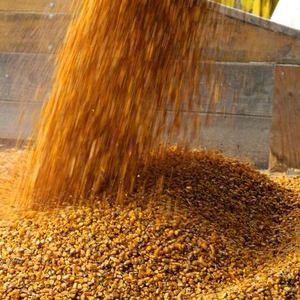December WASDE maintains 2016-'17 corn supply, use forecasts

December 12, 2016
BY Erin Krueger
The USDA recently published the December edition of its World Agricultural Supply and Demand Estimates report, announcing no changes have been made to the 2016-’17 corn supply and use projections.
The projected corn use for ethanol was maintained at 5.3 billion bushels for 2016-’17, up from an estimated 5.206 billion bushels in 2015-’16 and 5.2 billion bushels in 2014-’15.
Forecast U.S. corn exports are unchanged from November, despite a sales and shipment pace that is well above last year. The report explains that in recent years, early-season U.S. corn export commitments have not been a robust indicator of final exports, and it is expected that the U.S. will likely face strong competition from South America beginning in the first part of 2017.
Advertisement
Advertisement
The projected range for the season-average corn price received by producers is raised 5 cents on both ends to $3.05 and $3.65 per bushel, on continued higher-than-expected early-season prices.
China corn production is increased. Corn production for Brazil is also raised on increases in both area and yield, which, if realized, would be record-high. In addition, Canada corn production is raised, along with corn production in Indonesia.
Advertisement
Advertisement
Larger projected corn exports are expected for Brazil and Russia. Notable increases in corn imports are forecast for Vietnam, Iran, Taiwan, Colombia and Egypt. Partly offsetting are reductions in projected imports for Canada, the EU and Indonesia. Foreign corn ending stocks for 2016-’17 are raised 4.1 million tons this month, with the largest stock increases projected for China, Vietnam, Brazil and Russia.
The 2016-’17 projection for grain sorghum use for ethanol is raised 5 billion bushels. No other changes were made to grain sorghum supply or use, with forecast ending stocks lowered 5 million bushels when compared to November. Grain sorghum prices for 2016-’17 are projected to average $2.80 to $3.30 per bushel, down 10 cents on the high end of the range.
Related Stories
The U.S. Department of Energy’s Office of Energy Efficiency and Renewable Energy is soliciting public comments on a preliminary plan for determining provisional emissions rates (PER) for the purposes of the 45Z clean fuel production credit.
On July 17, Iowa’s cost-share Renewable Fuels Infrastructure Program awarded $1.12 million in grants for 20 applicants to add B11 and 4 applicants to add E15 to retail sites. This was the first meeting following the start of RFIP’s fiscal year.
Par Pacific Holdings Inc., Mitsubishi Corp. and ENEOS Corp. on July 21 announced the signing of definitive agreements to establish Hawaii Renewables LLC, a joint venture to produce renewable fuels at Par Pacific’s refinery in Kapolei Hawaii.
A new study published by the ABFA finds that the U.S. EPA’s proposal to cut the RIN by 50% for fuels made from foreign feedstocks, as part of its 2026 and 2027 RVOs, could stall the growth of the biomass-based diesel (BBD) industry.
Reps. Mike Flood, R-Neb., and Troy A. Carter, Sr., D-La., on July 21 reintroduced the SAF Information Act. The bill directs the U.S. EIA to more explicitly include SAF data in its weekly and monthly reports.
Upcoming Events










